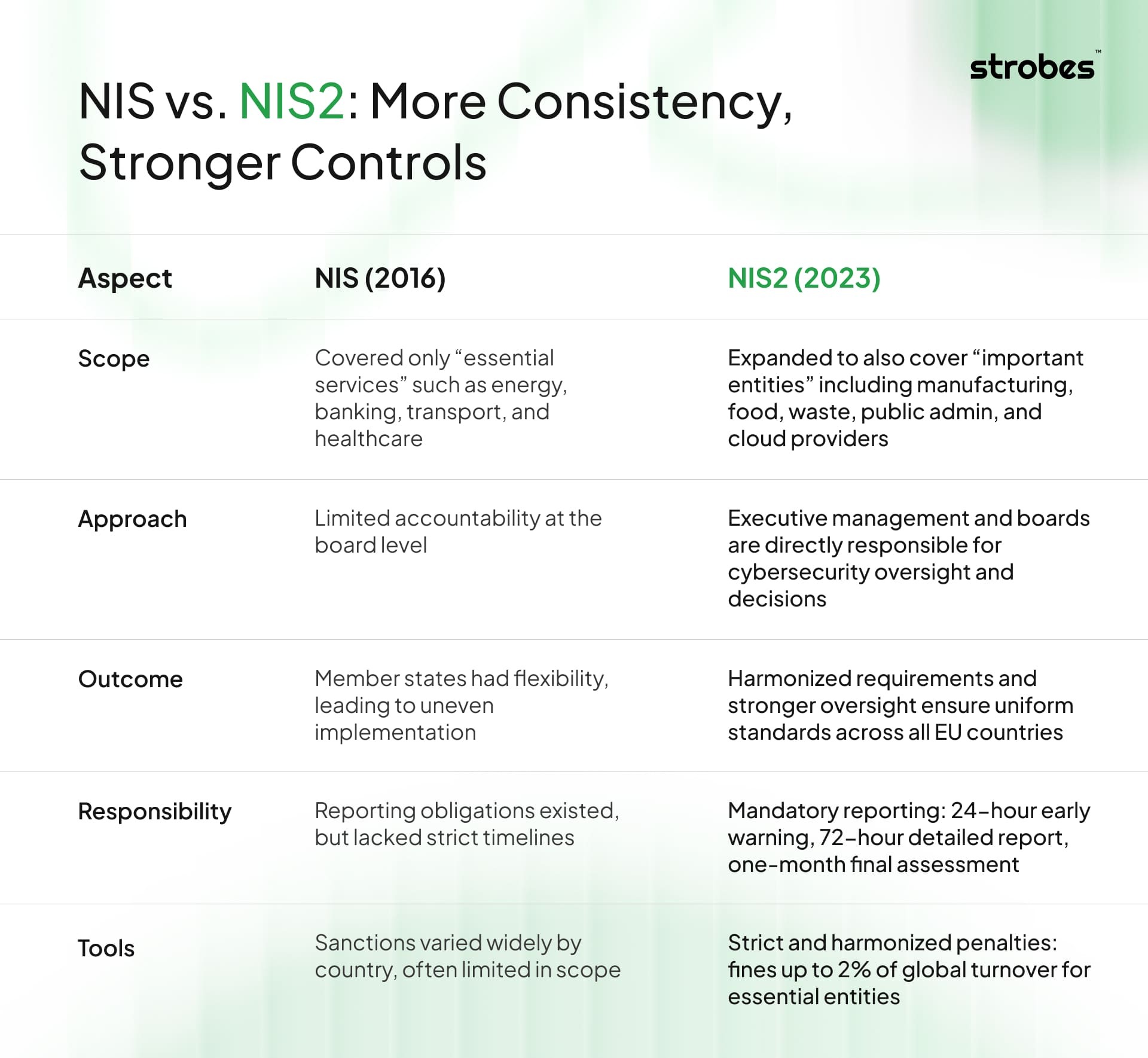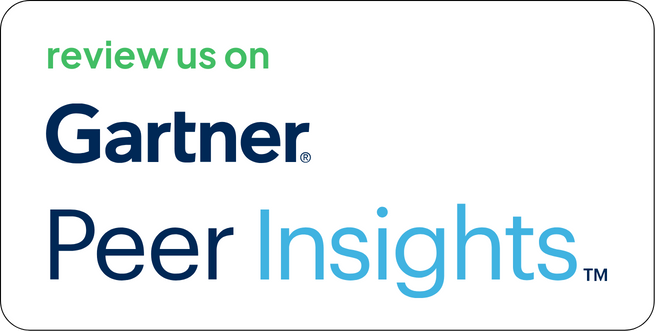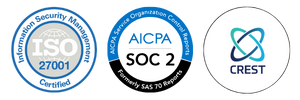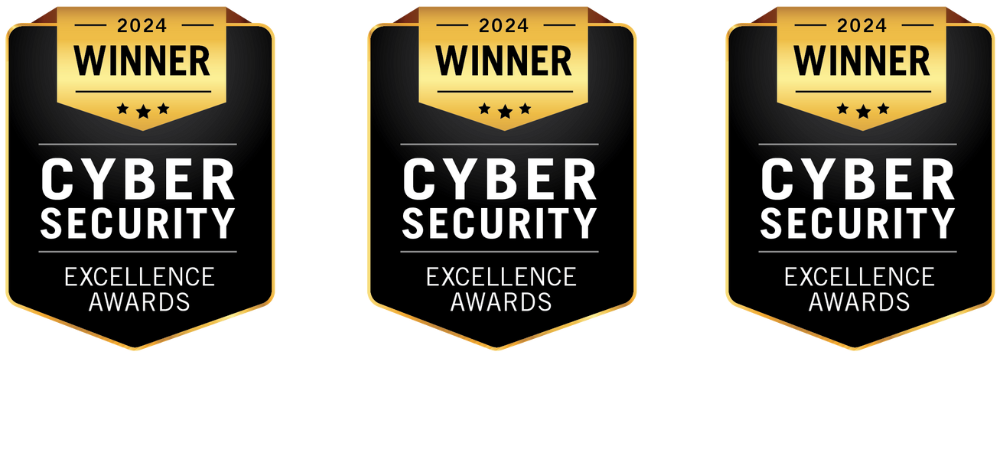Cybersecurity has ceased to be merely about technical controls. It has become a mandatory regulatory and business mandate. The European Union has established a new standard on how business entities should tackle security, resilience, and accountability with the implementation of the NIS2 Cybersecurity Directive.
The directive further increases the compliance stakes with more stringent measures for compliance and more industries that are under its scope, and enhances governance thresholds. To CISOs and security leaders, NIS2 is no longer yet another regulation to comply with; it is a chance to prioritize compliance with enterprise risk reduction and long-term resilience.
This blog will describe what the NIS2 Cybersecurity Directive involves, the NIS2 cybersecurity requirements, demonstrate how the NIS2 cybersecurity framework reinforces risk management, and give practical steps that security leaders can take to ensure compliance and minimize risk.
What is the NIS2 Cybersecurity Directive?
NIS2 Cybersecurity Directive, which was adopted in January 2023, is the new legislation in the European Union to replace the initial NIS Directive of 2016. It is intended to contribute to the overall cybersecurity situation of critical infrastructure and essential services in the EU.
Key Objectives of NIS2:
- Create a high level of security in cyberspace among member states.
- Enhance cyber resiliency and service outages.
- Increase the number of regulated entities and sectors, and supply chains.
- Enhance governance, accountability, and reporting of the enterprise.
In contrast to its predecessor, which was relevant to a smaller range of industries, NIS2 is now involved in healthcare, manufacturing, cloud computing, data centers, public administration, food, waste management, and others. This expansion makes sure that the necessary and critical areas are well-suited against cyber risks.
To CISOs and security leaders, it implies that it is not possible to choose whether to comply with the NIS2 cybersecurity directive or not. It is also lawful, and failure to follow it may lead to serious repercussions, loss of reputation, and even services.
NIS vs. NIS2: More Consistency, Stronger Controls

NIS laid the foundation, but its fragmented application limited its impact. NIS2 introduces consistency, stronger governance, and stricter controls, making it a far more effective directive for reducing cyber risks across the EU.
Core NIS2 Cybersecurity Requirements Enterprises Must Meet
The NIS2 cybersecurity requirements are more comprehensive than those of the original directive. They address governance, technical controls, reporting, and supply chain risk. Below are the core obligations every enterprise must understand.
1. Governance and Accountability
NIS2 explicitly places responsibility on boards and executive management. Leaders must approve cybersecurity risk management measures and can be held personally liable for non-compliance. Training and awareness at the leadership level are mandatory.
2. Incident Reporting
Organizations must report incidents quickly:
- Initial notification within 24 hours of detection.
- More detailed reporting within 72 hours.
- Final assessment report within one month.
This timeline ensures regulators and stakeholders are informed of threats before they escalate.
3. Risk Management Measures
The directive requires the implementation of technical and organizational measures, including:
- Access control and identity management.
- Encryption and cryptographic safeguards.
- Vulnerability and incident management programs.
- Multi-factor authentication for critical systems.
- Logging and monitoring of network and system activity.
- Supply chain security assessments.
4. Supply Chain Security
NIS2 emphasizes third-party and vendor risks. Enterprises must assess suppliers, include contractual obligations for cybersecurity, and ensure that external partners meet minimum standards.
5. Enforcement and Penalties
Penalties for non-compliance are substantial. Fines can reach up to 2% of global turnover for essential entities, highlighting the importance of compliance at the executive level.
These NIS2 cybersecurity requirements are designed to raise the baseline for enterprise security while ensuring accountability across leadership and operations.
How the NIS2 Cybersecurity Framework Strengthens Risk Management
Compliance is not only about avoiding fines. It is about strengthening resilience against real-world threats. The NIS2 cybersecurity framework provides a structured way to link compliance with risk management.
Alignment with International Standards
NIS2 encourages alignment with frameworks such as ISO 27001, NIST Cybersecurity Framework, and ENISA guidelines. This ensures that compliance measures are not siloed but integrated into recognized risk management practices.
Risk-Based Approach
Instead of blanket requirements, the framework supports vulnerability prioritization. Enterprises must assess the likelihood and impact of risks, focusing resources on areas that present the greatest exposure.
Continuous Monitoring
The directive calls for ongoing monitoring of vulnerabilities, incidents, and supply chain risks. This ensures that compliance is not treated as a one-time exercise but as an ongoing process of improvement.
Integration with Business Strategy
By embedding security into board reporting and enterprise governance, the NIS2 cybersecurity framework aligns security with business objectives. It encourages organizations to view compliance as part of overall enterprise resilience.
Steps for CISOs and Security Leaders to Stay Compliant
To meet the NIS2 cybersecurity requirements and leverage the NIS2 cybersecurity framework, CISOs and security leaders should follow a structured plan.
1. Build Executive Awareness and Board Reporting
- Conduct board-level training on NIS2 obligations.
- Establish reporting structures for regular cybersecurity updates.
- Ensure leadership signs off on risk management strategies.
2. Conduct Gap Assessments Against NIS2 Cybersecurity Requirements
- Perform an initial compliance audit.
- Identify gaps in technical controls, reporting processes, and governance.
- Prioritize remediation based on enterprise risk.
3. Strengthen Supply Chain Security
- Assess all critical vendors for compliance readiness.
- Include NIS2-specific requirements in contracts.
- Monitor supply chain risks continuously through automated tools.
4. Establish Incident Response and Reporting Readiness
- Develop incident response playbooks tailored to NIS2 timelines.
- Test reporting processes through simulations and drills.
- Build crisis communication plans for internal and external stakeholders.
5. Integrate Continuous Threat Exposure Management (CTEM)
- Shift from periodic compliance checks to continuous exposure management.
- Use platforms that integrate vulnerability scanning, penetration testing, and risk-based prioritization.
- Leverage threat intelligence to identify risks early and act before incidents escalate.
Risks to Avoid Under NIS2
Compliance can fail if organizations approach it superficially. Common mistakes include:
- Treating NIS2 as a checklist exercise rather than a risk-based program.
- Ignoring supply chain risks and vendor dependencies.
- Failing to assign clear accountability at leadership levels.
- Relying only on tools without proper governance and trained personnel.
- Overlooking reporting timelines and procedures.
Avoiding these pitfalls requires leadership involvement, continuous monitoring, and integration with enterprise risk strategies.
Transforming Compliance into Enterprise Value
Meeting the NIS2 cybersecurity requirements should not be seen only as a regulatory burden. Compliance brings strategic advantages:
- Customer Trust: Demonstrating compliance strengthens market credibility.
- Operational Resilience: Stronger risk management reduces disruption and downtime.
- Competitive Advantage: Enterprises that comply proactively can use it as a differentiator in the marketplace.
- Cross-Border Alignment: With NIS2 harmonizing cybersecurity across the EU, compliance simplifies global operations for multinational businesses.
By leveraging the NIS2 cybersecurity framework, CISOs can transform compliance initiatives into measurable enterprise value.
Conclusion
The NIS2 Cybersecurity Directive places a distinct responsibility on enterprises: the issue of security and compliance is no longer independent of business continuity and resilience. Having tighter reporting schedules, expanded scope of the coverage, and direct responsibility at the top level, organizations can no longer afford to act in a fragmented or reactive manner.
This is the time to integrate compliance with enterprise risk management to CISOs and other security leaders. It is not just that by implementing the NIS2 cybersecurity framework, you will decrease the chance of penalties but also enhance operational resilience, customer trust, and long-term business value.
We make this trip easier at Strobes Security. We combine Continuous Threat Exposure Management (CTEM), Risk-Based Vulnerability Management (RBVM), and Penetration Testing as a Service (PTaaS) to enable enterprises to effectively address the requirements of NIS2 cybersecurity. Strobes offers visibility and control needed to stay ahead, whether it is real-time asset discovery or risk prioritization and reporting compliance.
Take the next step. Talk to our experts and find out how Strobes can speed up your NIS2 compliance and lower enterprise risk. Book a free demo with us and see how quickly you can align with NIS2 requirements.








